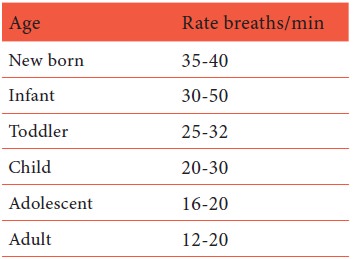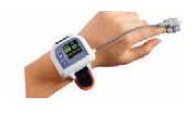Nursing - Respiration - Physical Examination | 11th Nursing : Chapter 5 : Nursing - Health Assessment and Physical Examination
Chapter: 11th Nursing : Chapter 5 : Nursing - Health Assessment and Physical Examination
Respiration - Physical Examination
Respiration
Respiration is the act of
inhalation and exhalation of air
Respiration derived from a Latin
word respire
The surface area of a lung is
roughly the same as a size of a tennis court
The usual ratio of respiration
rate and pulse rate is 1 to 4
The normal respiration rates are

Besides Age, Factors Affecting Respiration Rate:
1.
Sex: respirations are generally more rapid in females than in
males
2.
Exercise: increases the rate
3.
Emotions: such as fear influence respiration
4.
Heat: such as hot water or hot both causes increase in rate and
decrease in depth of breathing
5.
Cold makes the breathing full and deep
6.
Drugs: Like sedatives, slow the respirations
7.
Respiratory illness: increase the rate especially pneumonia
8.
Pain, fever, anaemia, haemorrhage and shock increase the rate
9.
Coma and brain injuries – cause decrease in respiration rate.
Procedure:- (counting respiration)
1.
The
patient must be at rest and unaware that respiration is being taken. It is
therefore wise to take while keeping fingers on the pulse
2.
Feel or watch the rise and fall of the patient’s chest
3.
Count each rise and fall as on respiration count for a full minute
4.
While counting the rate, note also
a)
Rhythm - Regular or irregular
b)
Depth - Shallow, normal or deep
c)
Sound
- quiet and noisy
d) Any discomfort or difficulty in
breathing
Alteration in Breathing Pattern
Bradypnoea - Abnormal slow
respiration less than 10/min
Tachypnoea - Abnormal high
respiration greater than 30-min
Apnoea - Absence of respiration
for several seconds
Hyperventilation - Rate and depth
of respiration increases
Hypoventilation - Rate and depth
of respiration is very slow
Cheyne – Strokes respiration -
Respiratory cycle begins with slow, shallow breaths that gradually increase to
abnormal rate and depth. This pattern reverses: Breathing slows and become
shallow climaxing in apnoea before respiration resumes.
Pulse oxymeter
Pulse oxymeter is a device useful
to measure the oxygen level (oxygen saturation of the blood) It is an easy
painless measure of how well oxygen is being send to parts of the body. At the
same time it measures the pulse rate also.

Related Topics